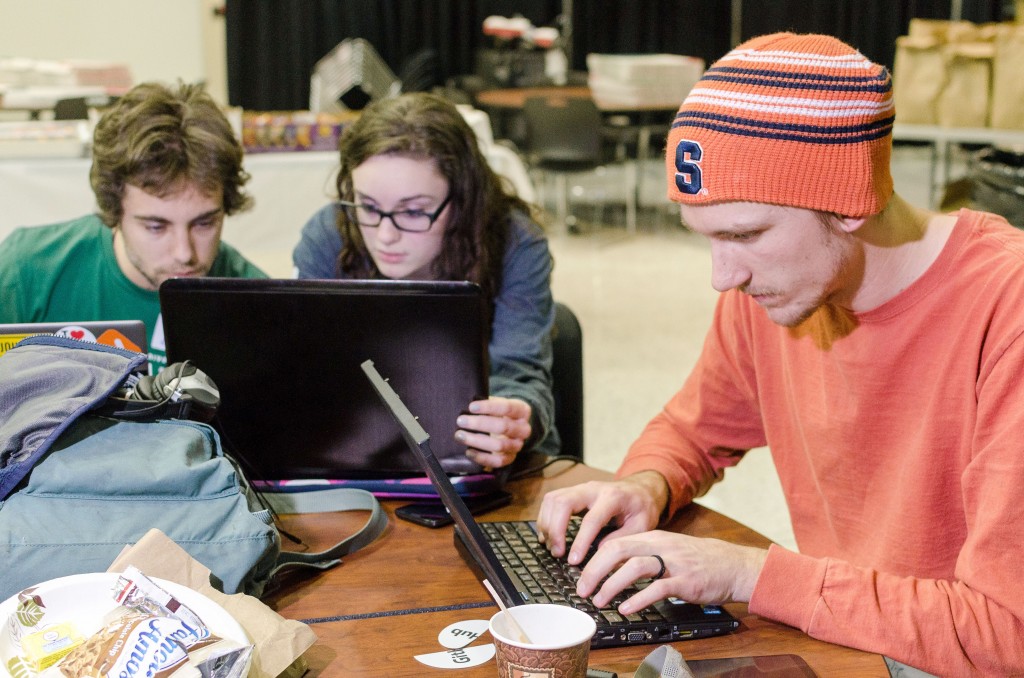
While the end of daylight saving time meant another hour of sleep for many, competitors at Binghamton University’s 24-hour Coding for a Cause Hackathon saw the extra hour as an opportunity to work hard creating technical solutions for local charities.
From Saturday to Sunday, 49 students and community members of all ages gathered in the Innovative Technologies Complex with the intent of coding solutions to IT problems local organizations were experiencing.
The competitors were tasked with five different challenges: creating various donor outreach campaigns via social media, searching for the most economic travel routes for mobile charities, constructing an interactive data visualization website for Broome County, creating a technological communication strategy for low-income neighborhoods and finding any technological solution to benefit any non-profit.
Pam Mischen, an associate professor and director of the Center for Applied Community Research and Development, said the judges were extremely impressed with the projects that were presented, as they were looking for relevance, creativity and technological sophistication.
“I cannot believe the students came up with these projects in 24 hours; some of the winners are freshmen, some of them learned what they needed to do to complete this challenge within the 24-hour period that they were given,” Mischen said. “Unbelievable talent was shown today.”
The panel of judges consisted of professors and charity representatives from United Way, Safe Streets, The Community Foundation for South Central New York and LaunchNY. Diane Brown, executive director of the Community Foundation for South Central New York, said she believed the combination of technology and social justice was a great pairing.
“One group discovered a resource for people living in poverty who needed phones that none of us knew existed,” Brown said. “I call that good research.”
Winners were chosen from each of the five categories, and first-place winners each received a cash prize of $800. Tremayne Stewart, a junior majoring in computer engineering, won first place in the fourth challenge, which asked them to create a technological communication strategy for low-income neighborhoods, and was also voted the most technically impressive. Stewart worked alone to create a website called Community Connect.
“It allowed non-profit organizations to effectively communicate with people in the community whether they have smart phones or cell phones, which is more geared toward the low-income sector,” Stewart explained.
Jarvis Chicken, a team consisting of Christopher Beard, a junior double-majoring in computer science and mathematics; Jack Fischer, a sophomore double-majoring in computer science and mathematics; and Kevin Johnson, a senior majoring in computer science, won first place in the first category for creating a website called donor.ly. Donor.ly would allow organizations to observe the content, hashtags and interactions of their Twitter followers, and then rank the followers based on their tweets’ relation to donating and volunteering.
Beard said he was proud of the work his team was able to accomplish in only 24 hours.
“We appreciate the work that we did because we know all the work we went through, all the problems that we got stumped on,” Beard said. “It’s super rewarding and very encouraging.”
Alex Terela, a junior majoring in computer science, agreed with Fischer on the importance of hackathons and working toward social change.
“Students are coming here because they want to, and are working on things they really believe in that can truly help people,” Terela said. “It’s the students that are making the effort to get here and work on these projects that are really making the difference.”


